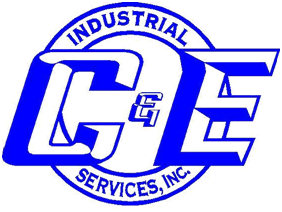
Industrial equipment and tools have come a long way. After all, almost a millennium has passed since the industrial revolution took hold of the United States and changed the way production and manufacturing worked. Early boiler design was not all that much more sophisticated from a tea kettle. The concept was relatively the same: a fire beneath an enclosed vessel in order to heat up water and produce steam. The production of steam as a form of power and energy is one that changed the course of history and innovation.
Today, industrial boilers have seen their fair share of advancements and safety features, but the central idea remains the same. When it comes to installing and maintaining industrial-grade boilers, the history of the boiler itself offers an idea of the progression that occurred to get where we are today.
The steam generating boiler goes back to the 19th century with the development of the kettle-type boiler. These boilers could be fired by anything that burned, usually, it would be coal and wood. Once the industrial revolution got underway, fire tube boilers became the standard design. This design usually involves either three or four sets of tubes that the flue gas can travel through.
The Industrial Revolution and Development of Early Boiler
The Industrial Revolution meant that human beings had learned how to power machines and use alternative fuel sources as a way to increase power, workload, and efficiency. This, of course, had an overhauling effect on most industries. The fuel sources most commonly used at this time were water, steam, and coal. Through the use of these fuel sources in various ways including inventions like the cotton gin, steam engines, steamboats, railroads and more, human beings could produce more, transport more, and heat more effectively.
Although not exactly pinned down who is responsible for the first steam-generating boiler, two names that might often be associated with the boiler business include George Babcock, Steven Wilcox. These were two well-known founding fathers of the steam-generating boiler. It is their names that appear in one of the earliest patents for boiler design that used tubes inside a firebrick-walled structure to generate steam. These initial boilers were small, were powered by coal, fired by hand, and operated at a very low rate of heat input. Other boiler companies in the early days of the technology included the Stirling Boiler Company, which made the H-type boiler and had a brick setting design. The Stirling designed soon merged with the Babcock and Wilcox and produced what would be one of the most successful boilers of the time capable of producing 50,000 pounds of steam per hour.
The first brick-wall-constructed boilers were useful but limited in size and capacity. As the size of the boiler increased, so did the heat input and steam temperature. The three factors that had the most effect on the development of the boilers included heat input, pressure, and steam temperature. In the early days of boiler designs, many towns had their own electric company but as these boilers increased in size, they realized that it would not be effective to simply keep building gigantic boilers. Engineers had to figure out how to keep the boiler thermally and energy-efficient, generate more steam and cost less to build.
The Safety Revolution and Improving Design
Around the turn of the 20th century, safety became a great concern for people and workers using industrial-grade boilers. Engineers worked to make these systems as safe and secure as possible. After World War II, the country had expanded its industrial base and capabilities, which meant that boilers were in high demand. And since the mid 20th century, there have been many safety features and characteristics that have improved the boiler design and also increased its efficiency.
Boiler Maintenance Tips — A Quick Checklist Overview
Maintaining your boiler is likely a top priority for you and your company. Preventative maintenance will save you in operation costs, malfunction costs, and lost time in the event of a breakdown, etc. Just like the maintenance, you perform on your car, maintaining your boiler guarantees a longer lifespan and a less likely event of a major breakdown.
Preventative maintenance can be structured in different ways. For utmost efficiency, it might be broken down into daily, monthly, and annual services. During these routine inspections, you might catch a small glitch that will prompt you to call repair services and prevent a bigger problem from metastasizing.
Daily maintenance routine:
- Give a quick look to all boiler equipment and components. Look for unusual vibrations or noises.
- Check the venting system and ensure it is not blocked
- View display panel for any service codes or error messages
- Check boiler readings
Monthly routine:
- Keep an eye on combustion air piping and flue gas vent piping for leaking, deteriorations or signs of leakage
- Lights and alarms
- Check burner’s diffuser
- Operating and modulating controls
Annual Service:
Hire a professional to look at your boiler on a regular basis to avoid any major malfunctions or glitches.
- Boiler hydronic piping
- Check burner flames
- Condition of wiring and switches
- Pump alignment
- Heating system
- Venting system for deteriorations
- Electrical connections and wiring
- Water PH Levels
Get Maintenance for Your Industrial Boiler with C & E Industrial Works
As time progressed, new materials, fuels, control systems, and enhanced processes, the design of the boiler continued to develop. Today, you are likely to find three different types of boilers: the fire tube boilers, water tube boilers, and cast iron sectional boilers. These are better-built and more robust boilers than ever before. Here at C&E Industrial Works, we specialize in industrial-sized boilers. Whether you need repair, service, or maintenance, we can help. Call experts you trust.


